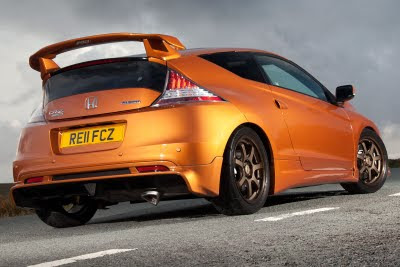Here is Opel Mireva 2011. This Opel Meriva car design is designed with sculptural exterior design. Some advanced features of this car are spacious and comfortable interior and rear hinged door. This compact yet elegance MPV variant was started to be sold on summer 2010. This Opel Meriva made its debut at the 2010 Geneva Motor Show. The sculpted exterior of this Opel Meriva has the same character with Opel car which was instruduced at the 2008 Geneva Motor Show. The rear detail of this Mireva features a hinged door called as FlexDoor which is coupled with connectional B-pillar that provides easy access to its cabin.
The Meriva’s flexibility trademark is enhanced by expressive exterior and interior styling that carries forward Opel’s new sculptural design language. Its monocab silhouette is fluid, elegant and dynamic. The rear window graphic features a distinctive wave accentuating the rear-hinged FlexDoors, improving the view for rear seated passengers, particularly children.
Increased flexibility is extended to all areas in the new Meriva. In the cabin, the innovative FlexSpace rear seating system requires even less effort to move the seats in their different positions or to fold them down.
Throughout the cabin, storage space is considerably increased with convenient locations provided for items commonly carried inside a car. The revolutionary FlexRail console system consisting of exchangeable storage units that can slide on rails located between the front seats provides convenient and adaptable storage for any kind of use.
Up front, the generously proportioned seats are similar to those of the new Astra and Insignia.
They offer a wide range of adjustment – 240 mm forwards/backwards and 65 mm in height – allowing people of all size and age to find optimal comfort for their journeys. Also new for Meriva is the availability of Opel’s FlexFix integrated rear bicycle carrier.
The new Meriva benefits from a longer wheelbase, wider front and rear tracks, all contributing to improved handling and greater ride comfort.
The range of powertrains features economical and efficient turbocharged engines offering a power bandwidth from 75 to 140 hp.
A particularly economical ecoFLEX version will also be offered. The Meriva will offer a choice of 5 and 6-speed manual transmissions as well as a 6-speed automatic gearbox.
Designed and developed at Opel’s engineering center in Rüsselsheim, Germany, the new Meriva will be built in Zaragoza, Spain and is scheduled to go on sale this summer.
The FlexDoors concept
The FlexDoors rear-hinged rear doors concept is a first from a volume manufacturer in the industry. Unlike the few well-known rear-hinged doors systems available, FlexDoors features full-sized doors which open independently without the need for a clamshell overlap by the front doors.
A conventional B-pillar makes this independent opening possible, while ensuring good body rigidity and side impact protection. In addition, it has a handle that further facilitates entry and exit.
Locating the door hinges on the C-pillar also allows more clearance for passengers’ feet to swing past the B-pillar flange. The FlexDoors also open up to 84 degrees, much wider than conventional doors, for which 68-70 degrees is the usual standard.
Front passengers also benefit from the same 84 degrees opening angle. FlexDoors are also more ergonomic and convenient for the front passengers to open FlexDoors when stowing a jacket, a briefcase or an umbrella behind the front seat.
FlexDoors also provide greater safety, especially for young families. For example, when both the front and rear doors are open at the same time, a safety zone is created as both child and parent can get out of the car without a door separating them, reducing the risk of children stepping out into traffic.
Inside and out, the Meriva moves forward Opel’s new, expressive design language – sculptural artistry meets German precision – and adheres to the same focus on quality already seen on Insignia and the new Astra.
Opel designers created a dynamic and elegant monocab. A lower, sweeping roof-line combined with Opel’s signature blade side-body motif and the wave rear window line give the Meriva a fresh, distinctive character and look.
The interior is characterized by flowing lines and surfaces. The wraparound wing shaped instrument panel enhances the feeling of width and roominess. The forward leaning center stack contributes to this and adds a notion of sportiness and sculpture. Six different levels of colour and trim will be available.





